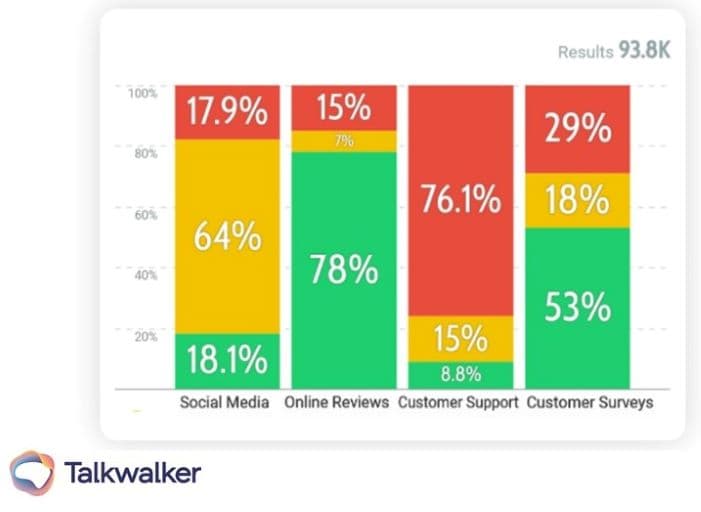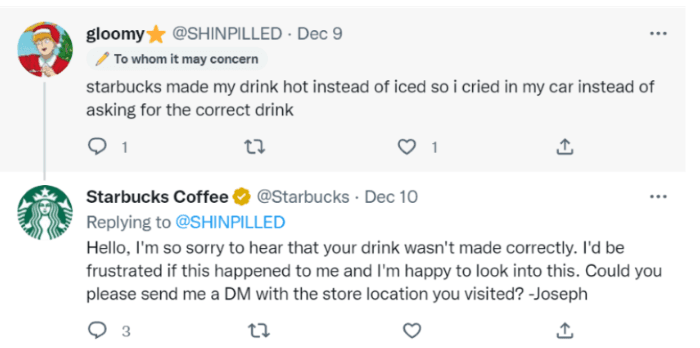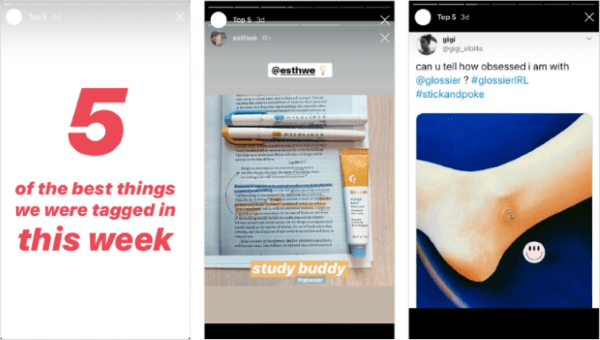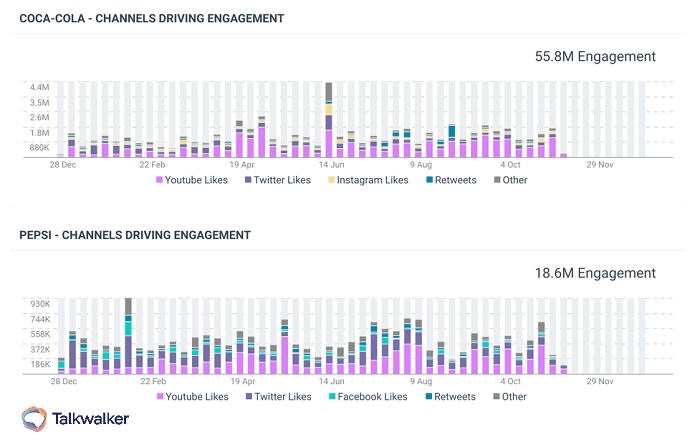How can social media listening increase customer advocacy?
Learn how social media listening can boost customer advocacy by understanding consumer sentiment, driving brand love & optimizing customer journeys.
February 14, 2024

- What is customer advocacy?
- What is social media listening and why is it so important?
- 1. Optimize your customer journey
- 2. Ensure a positive brand reputation
- 3. Understand your audience and plan your content strategy accordingly
- 4. Benchmark against your competitors
- 5. Identify loyal customers and influencers
- How to action social media listening to increase customer advocacy?
- How can social media listening increase customer advocacy?
Marketing your brand effectively isn’t about what you say. It’s about what everyone else says about you. Customer advocates, those who love your brand and shout about it, are worth their weight in sales. Here’s how you can use social media listening to increase customer advocacy.
What is customer advocacy?
Customer advocacy is about nurturing relationships with your best customers, to encourage them to actively promote your brand. This reason? Consumers trust what other consumers say, over a brand’s own marketing. 76% of people surveyed said they are more likely to share content from ‘normal people’ than brands.
By turning more consumers into brand advocates, you can boost your marketing efforts, while also increasing client retention.
The trick to doing this effectively is through clever social media listening.
What is social media listening and why is it so important?
Social media listening identifies, monitors, and analyzes consumer conversations across social channels. This includes consumer feedback, brand mentions, competitor mentions, and industry trends, amongst others. With social listening, you can
Identify emerging trends
Avoid looming crises
Understand consumer sentiment toward your brand and competitors.
With a robust social media listening strategy, your brand will be in an optimal position to drive customer advocacy. Helping you to create products and a customer journey that consumers love.
Here are 5 ways to increase customer advocacy through social listening.
1. Optimize your customer journey
Social media listening drives customer advocacy by enabling brands to understand consumers’ needs, wants, and issues. Enabling businesses to adapt to meet these expectations.
By keeping a pulse on what your consumers say about your brand, you can identify gaps in the customer journey. And take swift action to close these gaps. You’ll also identify aspects of the customer journey that are keeping customers happy, that you can boost.
Social media listening also improves customer service by allowing you to respond directly to consumers on social channels. Through sentiment analysis you can identify positive and negative feedback quickly, and respond directly to this feedback promptly.
By devoting time and effort to building authentic communication with consumers you can gain brand advocates. They will feel valued, and be more willing to act as brand ambassadors.
The chart below shows how consumer sentiment differs across various brand touchpoints. These include social media, online reviews, customer support, and customer surveys. This allows you to plan and prioritize your responses to consumers across the various channels accordingly.

Split of consumer sentiment across different brand touchpoints. Talkwalker Social Listening
2. Ensure a positive brand reputation
For customers to advocate your brand, first ensure that the sentiment surrounding your brand is positive. You must be a brand that customers want to associate with and want to promote to their peers and networks.
With millions of daily social media conversations, you can’t risk missing important brand mentions. These could show consumers' dissatisfaction with the brand, which could grow into a full-fledged PR crisis.
One reason Starbucks is a favorite brand is how it regularly replies to customers’ feedback on social media. They address negative customer experiences quickly before they develop into a bigger issue.

Starbucks regularly replies to its customers on social, even when consumers don't tag the brand.
You can’t keep track of brand mentions on social media manually. With a social media listening tool, you can identify potential crises before they happen. And take the necessary action to tackle the issue before it gets worse. With a thorough system of crisis identification, monitoring, and management, brands can maintain a positive brand image, encouraging loyalty and advocacy amongst customers.
3. Understand your audience and plan your content strategy accordingly
Another way social media listening helps to drive customer advocacy is by providing a deeper understanding of your audience. This way, you can craft the right brand message for them.
To engage customers who will become brand advocates, first identify the right audience. Are you speaking to the right people? Is your brand message relevant to your audience? Is your content strategy in tune with what your audience values?
To encourage loyalty and advocacy amongst your audience, you have to create content that matters to them.
With social media listening, you can find valuable insights about your audience - including behavior, geographical information, demographics, and more. Then craft content that is relevant to them with an authentic tone of voice.
Take Glossier for example. The beauty brand has a supportive customer base for various reasons. One of them is the brand’s content strategy, built on a solid understanding of its audience.
Because the brand understands the value of community amongst consumers today, Glossier regularly shares user-generated content. This includes their ”Top 5” Instagram Story Highlight. Other than encouraging more customers to share their usage of Glossier products, this also helps to connect Glossier fans.

Glossier’s Top 5 user-generated content highlights on Instagram
4. Benchmark against your competitors
Social media listening also helps you understand what people say about your competitors.
Which of their campaigns do people love?
What are the consumer gaps they are facing?
Where are the opportunities for you to jump in on to make your brand the preferred choice of consumers?
By tapping into social listening for competitive benchmarking, you can rise above the competition. Making you a brand that consumers love and want to advocate for.
With a social media listening platform like Talkwalker, you can regularly measure your share of voice. This measures your brand’s market share versus competitors, based on brand consumer conversations. By analyzing the share of voice, you can consumer mentions of your brand versus your competitors on each channel. See the example below of Coca-Cola and Pepsi.

Talkwalker simulated report comparing likes for Coca-Cola versus Pepsi across various social channels, Talkwalker Social Listening
5. Identify loyal customers and influencers
By tracking and analyzing discussions about your brand, you can identify loyal customers and influencers already advocating for you. You can strengthen the relationship with this group of customers and encourage them to continue sharing their positive experiences. You can also identify potential influencers. Reach out to them, and incentivize them to advocate your products and services to their respective networks.
A brand that has successfully done this is Shopee. They monitor organic conversations around their brand to identify positive user experiences. This allows them to identify the top Shopee fans and surprise them with a variety of rewards.
How to action social media listening to increase customer advocacy?
Now, let’s look at how to use social media listening effectively.
Identify the social media platforms that your target audience is active on. These include social media platforms such as Facebook, Twitter, and Instagram. As well as other platforms that are relevant to the business.
Identify the keywords, phrases, hashtags, and topics to track consumer conversations that are relevant to your brand.
Use a social media listening platform to track and analyze the social media conversations happening in real time. With Talkwalker, you can leverage features like image recognition, speech analytics, and visual analytics. These can provide a more complete picture of what consumers are saying about you.
Analyze the insights to:
Identify loyal customers, existing and potential influencers
Compare competitor performance
Find issues faced by customers that need addressing
Uncover opportunities to further strengthen your customer relationship and encourage advocacy
How can social media listening increase customer advocacy?
To become a brand that your customers want to shout about, it’s essential to first show that you understand them inside out.
Only then can you meet their needs, develop a strong consumer-brand relationship, and become their preferred brand.
Talkwalker Social Listening gives you a detailed analysis of your consumers. Highlighting those who already advocating for you online. To learn more, click below.
{{cta('91430369778','justifycenter')}}
